Deadlift Bar vs Stiff Bar – Which is the Right One for You?
Author:
Reviewed by:
(21 years of Oly Lifting experience)
Unlock your full potential by engaging with our experts and community! Have questions about your fitness journey or looking for expert advice on weightlifting techniques? Don’t hesitate — leave a comment below and Sergii Putsov will provide a personalized answer and insights to help you reach your goals.
Torokhtiy is reader-supported. Some links are affiliate links, and we may earn a commission at no extra cost to you. See our disclosure page for details.
As a person who’s dedicated most of my life to fitness, the gym, nutrition and overall athleticism, I’ve naturally spent countless hours refining my deadlift technique. Gosh, I can’t even begin to think of how many hours I’ve spent. But! With great numbers, usually come great results, as well. So here we have the question – deadlift bar or power bar?
In this article, I’ll talk about the primary differences between a deadlift bar vs the stiff bar; and even though they might look similar, or even the same to the untrained eye – trust me, there’s a huge difference between the two that goes way beyond them being two metal poles for attaching weight plates.
There’s knurling, there’s the whip, there are the materials used and why they behave the way they behave when under stress. I’ll talk about those differences. But I’ll also try answering questions that I often get from friends or colleagues.
How much does a deadlift bar weigh? What is the length of a deadlift bar? Is it better to use a deadlift bar or a power bar? Deadlift bar vs Olympic bar – how do they compare? I’ll address all those questions and more as I go through the article. Probably as I get more hyped and the ideas and experiences start running wild as I talk about them, I’ll surely think of more things to cover.
So, what can I say? Prepare your chalk, secure your belt, and accompany me on this epic journey to answer these queries and demystify the stiff bar vs deadlift bar discussion.
What is the difference between deadlift bar vs stiff bar? The main difference between a deadlift bar and a stiff bar is the amount of flex or “whip” in the bar. A deadlift bar flexes more when under stress. A stiff bar has minimal to no flexibility when under stress- hence the name “stiff bar”.
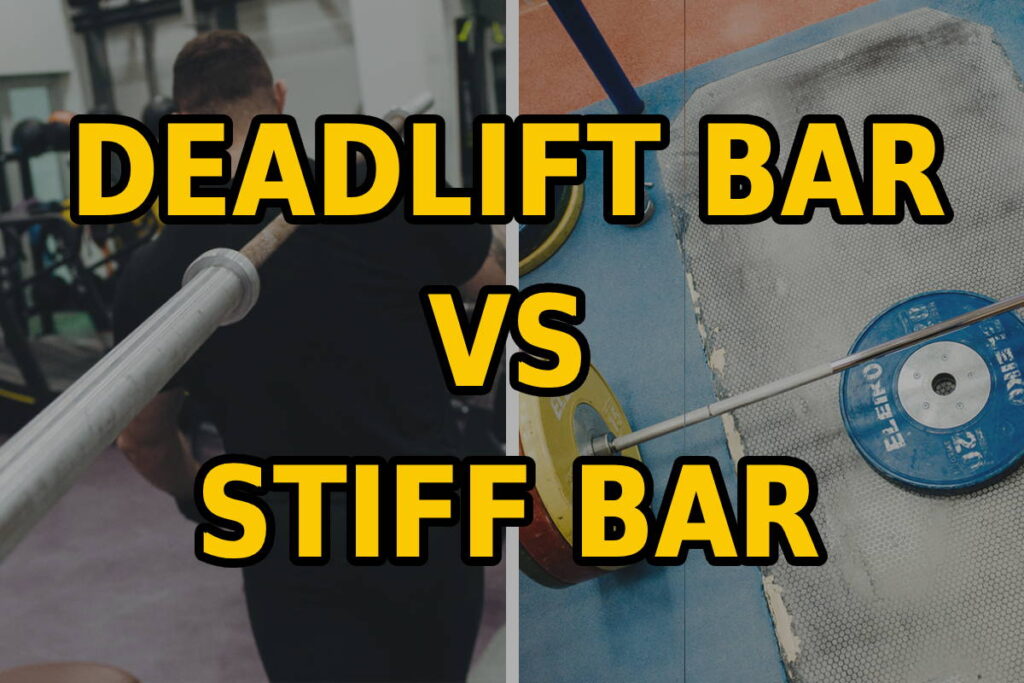
What is a Deadlift Bar?
When discussing strength training equipment, deadlift bars warrant special attention because they’re uniquely designed for boosting performance during deadlifting exercises.
One way this is achieved is through enhanced flexibility or ‘whip’ that other types of weight-bearing bars lack—Deadlift bars can bend continuously throughout the lift movement before returning to a neutral position facilitating reduced pressure on lower back muscles that commonly experience strain during similar lifts executed with other types of bars.
The reason why deadlift bars ‘whip’, and steel bars don’t is because of the material used to create them. The most commonly used materials to create a deadlift bar are molybdenum-alloyed steels (steel alloy 4140/4340, yield strength 655/852 MPa), cold-worked austenitic stainless steels (stainless steel grade 301/304/310, yield strength 470-1310 MPa), and martensitic stainless steels (stainless steel grade 410/420/431, yield strength 415-1895 MPa).
Additionally helpful – ‘How long is a deadlift bar?’ Its slightly longer size at approximately 90 inches compared with regular barbells. ‘How heavy is a deadlift bar?’ — it’s lighter in weight at about 44 pounds which can allow users greater maneuverability that makes it easier for lifters with varying body types to reap the benefits of Deadlift Bar training.
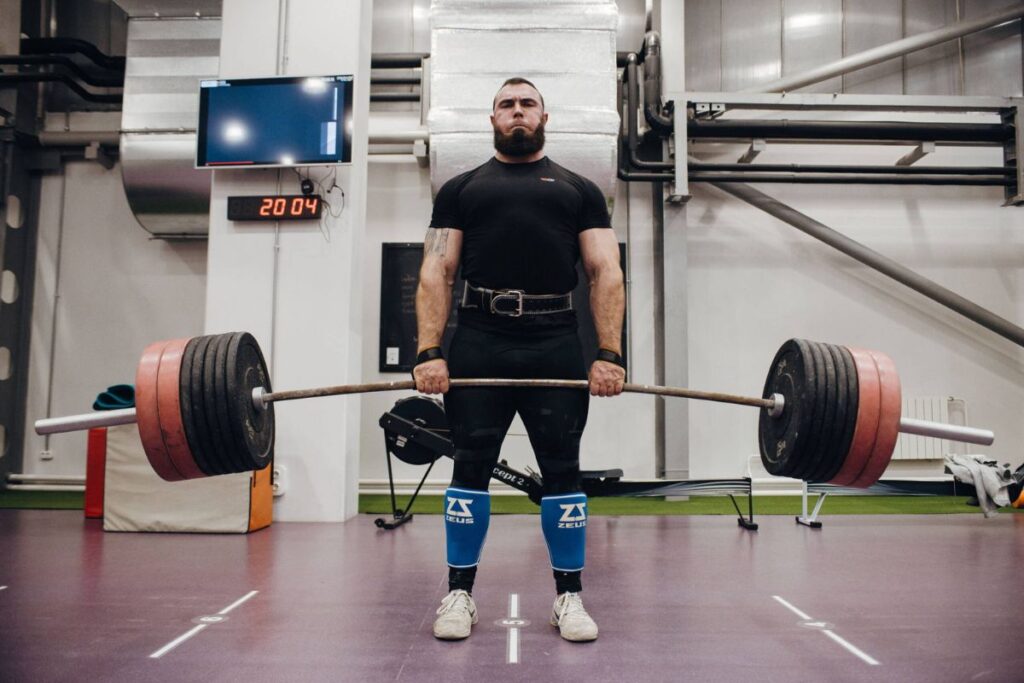
What is a Stiff Bar?
A stiff bar, also referred to as a powerlifting bar or a standard barbell, is frequently employed in strength training and powerlifting routines since it typically measures 86 inches in length, and weighs approximately 45 pounds.
So unlike a standard deadlift bar, the stiff bar doesn’t possess the same degree of flexibility, or what some more hardcore gym-goers will call ‘whip’.
I remember in my early gym days when I first heard someone saying whip inside a gym – I was like, “What’s going on here? Where am I?!”.
So, back to the stiff bar. It’s engineered to be rigid and robust, offering stability and control during lifts. But as I’ve mentioned, the lack of flexibility means that if you overload the bar above its maximum weight capacity, the bar will bend beyond repair. Now usually, those weight capacities are so large that you’d need a forklift to lift a bar that heavy. So you probably will never see a stiff bar bend. Unless it is low-quality, or a cheaply made one. So be cautious if that is the case. But all in all, they exhibit more tensile strength than deadlift bars.
When you look at the diameter of a stiff bar, you’ll notice that they are quite a bit more thicker than other barbells. This extra diameter allows for a considerably better and firm grip.
Stiff bars are generally used for a variety of exercises. But the main ones would be bench presses, squats, and overhead presses. If you saw someone doing those exercises, they were most likely using a stiff bar.
The absence of flex in the bar enables lifters to concentrate on developing strength and power without the additional energy storage and release that a deadlift bar provides.
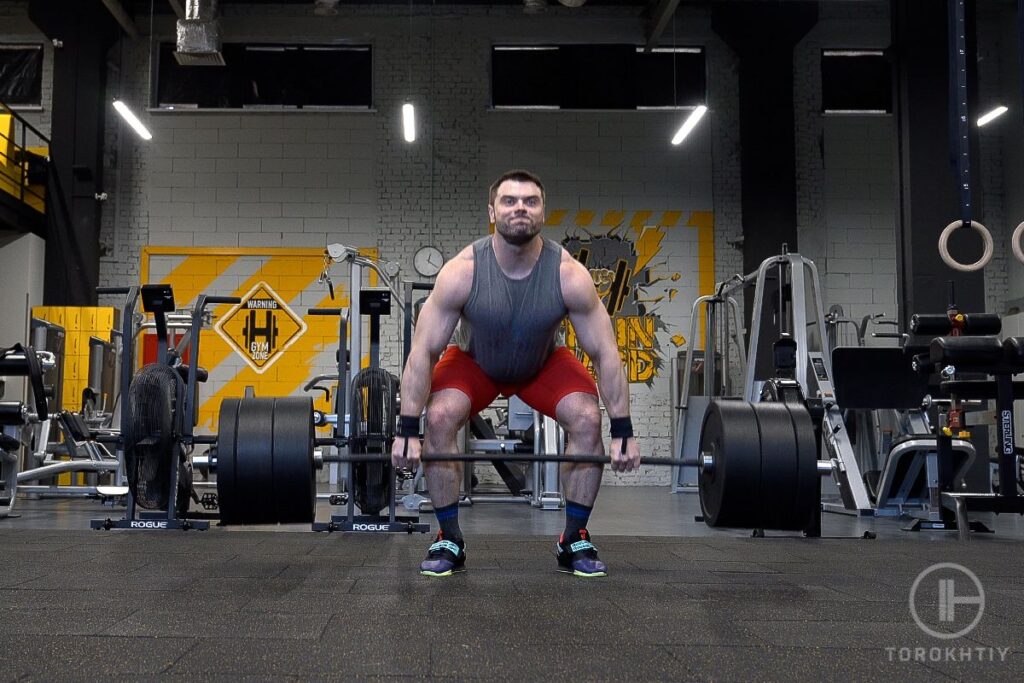
The Deadlift Bar vs Stiff Bar: Comparison
Back when I was an inexperienced lifter, I remember thinking that there was not so much difference between the squat bar or deadlift bar. But I couldn’t be more wrong. Let’s put them side by side and compare their differences in detail so you don’t make the same mistake I did.
I can recall when I was starting my weightlifting journey confusedly believing that it doesn’t matter whether I’m using a squat bar or deadlift bar. Well. to make a long story short – I was wrong. And to avoid any confusion regarding specific benefits underlined by these two tools’ distinct features in various lifting movements I’ll take the extra time here to analyze their differences.
1. Flexibility
One notable distinction between Deadlift Bars and Stiff Barbell lies in their flexibility levels. The former has more give which translates into a movement better suited for posterior chain muscle engagement – while stiffer Barbells are designed particularly with stability in mind rather than movement or increased range of motion.
2. Weight and Length
As far as weight differences go Deadlift Bars typically clock at around 44 lbs and stretch up to about 90” somewhat shorter than a stiffer Barbells over length which measures roughly 86’’ with an additional pound added onto its total weight.
3. Purpose
Deadlift bars are created specifically for leveraging additional whip during lifts facilitating heavier movements. This stands as compared to stiffer barbells which are versatile and grounded. Used for different weight training plans including squats and overhead presses. This distinction between stability vs. flexibility is quite crucial in barbell use – stiffer barbells significantly minimize movement during heavier lifting exercises, while a more malleable Deadlift Bar supports a wider range of motion and effectively targets muscles utilized throughout deadlifting. So keep that in mind when thinking about what you are trying to accomplish and go from there in order to make the best choice between the two types of bars.
4. Training Focus
When it comes to deciding which Bar might be best suited to underlining your personal weight training objectives – those specially geared towards control and stability might find using the stiffer Barbells beneficial in their program rather than challenging themselves with heavier Deadlift qualities more suitable on Deadlifting Bars!
| Сriterias | Deadlift Bar | Stiff Bar |
| Weight | 44 lbs. | 45 lbs. |
| Diameter | 27 mm | 29 mm |
| Shaft Length | 56’’ | 51.5’’ |
| Total Length | 90’’ | 86’’ |
| Sleeve Length | 15.5’’ | 16.25’’ |
| Center Knurl | No | Yes |
| Tensile Strength | 190.000 psi | 205.000 psi |
Deadlift Bar vs Stiff Bar: Summary
As with everything in life, both deadlift and stiff bars both come with their own set of pros and cons. But before I dive into those, I’ll just quickly summarize both types of bars in as few words as I can.
Deadlift Bar:
- Flexibility for better lifts
- Enhanced grip and whip
- Targeting posterior chain strength
Stiff Bar:
- Maximum stability for heavy loads
- Ideal for powerlifting competitions
- Versatile for various exercises
Now, let me get into a bit more detail on all the pros and cons of both barbell types, so that you get a clear picture on not only why both are great in certain areas, but also the things that might come to frustrate you if you discover them unexpectedly and they catch you left-footed.
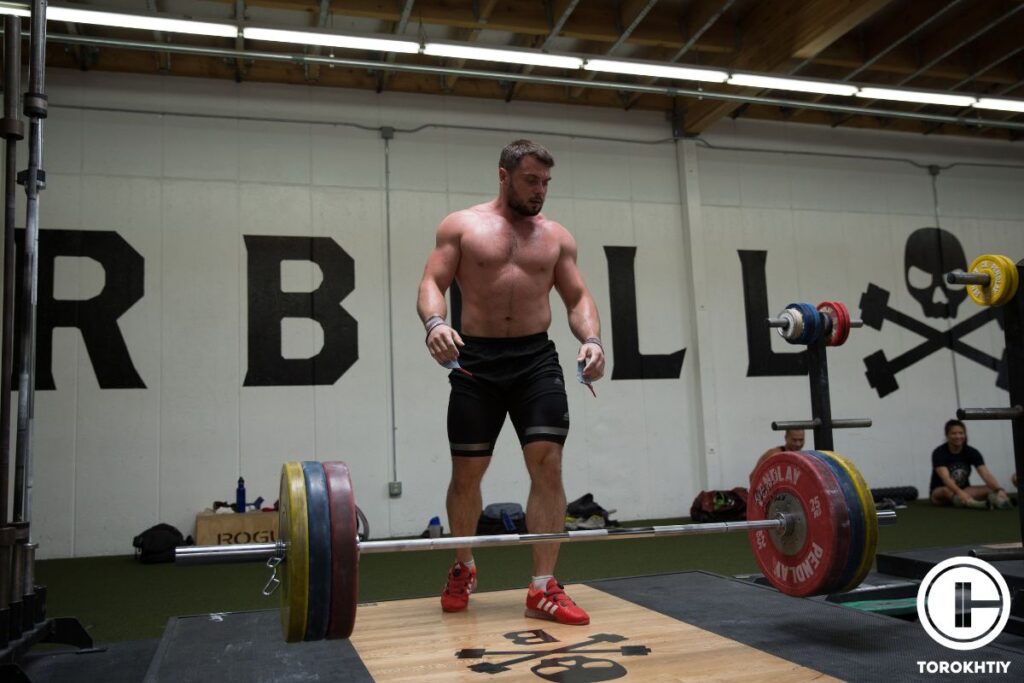
Deadlift Bar vs Stiff Bar: Pros and Cons
As I’ve mentioned earlier, for the untrained eye, when you look at both these barbells lying next to each other, they might look very similar, or for some, they might even look the same. But, of course, these are two completely different barbells, created for a different purpose. And different things usually have a different list of pros and cons attached to them.
Pros and Cons of Deadlift Bars
Positives:
Could be better:
Pros and Cons of Stiff Bars
Positives:
Could be better:
So what can we learn from this? Generally, with deadlift bars, there’s ‘whip’. They are primarily used for the deadlift exercise(a posterior-chain exercise); this is also where they got their name. And the flexibility generally helps with quick lifts, making them more manageable, and safer.
And with stiff bars, there’s, well, stiffness, aka little-to-no flexibility. They are used for the more common bench press exercises, squats, and similar exercises. Also, they have no surprise factor as they won’t bend/wobble/jerk, or whatever else you might call it – thus making them super predictable.
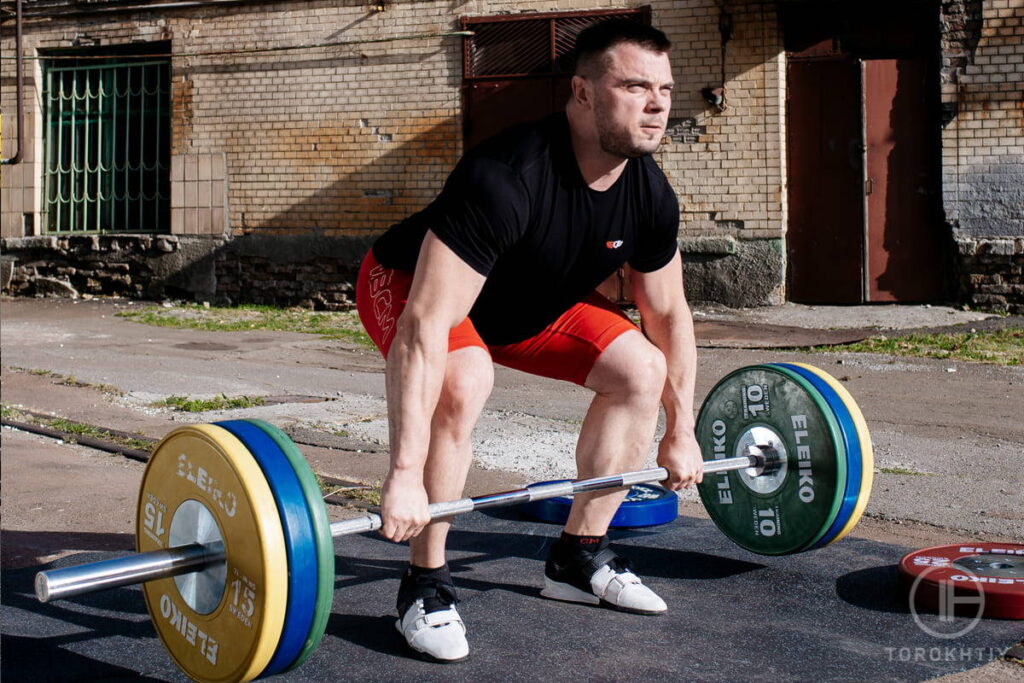
Deadlift Bar vs Stiff Bar: When to Use Each
I’ve already mentioned this briefly. But I’d like to make a dedicated section for this – When to use a deadlift bar, and when to use a stiff bar?
I don’t want you to leave this article and still be unsure of this answer, so I’ll make it very clear, and then I’ll touch on both in a bit more detail.
When Should You Use A:
Deadlift Bar:
- When you prioritize flexibility and enhanced range of motion during deadlifts
- When you want to target and develop your posterior chain muscles effectively
- If you are focused on powerlifting and deadlift-specific training
- If you require superior grip with specialty knurling to reduce the chance of slipping
- When you aim for explosive lifts and potential for higher personal records (PRs)
Stiff Bar:
- When maximum stability and rigidity are crucial, particularly for heavy compound lifts
- If you seek consistent and predictable bar movement, allowing for precise technique
- When performing various powerlifting exercises such as squats, bench presses, and deadlifts
- If you prefer a bar with a reliable grip and controlled lifting without excessive whip
- Whether you are a beginner or an advanced lifter looking for overall strength development
The first question that came to mind when writing this section was, “Can I use a stiff bar for deadlift?”
The answer is yes, of course you can! Deadlift bars are specially designed for that particular exercise because with deadlifting you usually lift heavier weights, and the extra flexibility helps reduce some of the strain on your body.
But yeah, you can use a stiff bar for the same, even though if you plan on deadlifting for a longer time period, or are planning on going for some World Records, then I suggest you invest in a proper deadlift bar.
Now that that question is out of the way, let me continue touching on the list above, but with more words.
To maximize your workout routine while ensuring your safety during intense sessions, consider using the specially designed deadlift bar.
Its ability to stretch while maintaining stiffness creates excellent conditions for generating maximum power output from the activation of all targeted muscles with an extended range of motion suitable for explosive lifts aimed at testing one’s boundaries in weightlifting challenges.
If you’re looking for more flexible routines such as sumo deadlifts or Romanian deadlifts, then our flexible yet powerful whip-enhancing bar guarantees optimal results making sure you derive enough benefits from exercises hence becoming a step closer towards achieving your fitness goals!
However, if stability rather than flexibility is what you need, then the stiffened bar should be perfect. Especially in instances where precise techniques must be maintained, like squats, bench presses overhead presses, among other powerlifting exercises.
This solidly built versatile piece of gym equipment supports dependable stability removing any chances of uneven load distribution, thereby increasing chances of accurate techniques being consistently executed throughout each session.
Rogue Ohio Deadlift Bar Review
I recently got my hands on the Rogue Ohio Deadlift Bar and its commendable performance undoubtedly left an impression on me.
Therefore, I’m excited to share my feedback with you all today! This piece offers a sleek appearance due to its black electro-coat shaft finishes while also providing significant corrosion resistance at an affordable price point that’s environment friendly too!
It’s constructed with top-notch quality steel produced right here in America – making this one of the top choices of many for competitive powerlifting activities.
The aggressive knurling it offers enables one to maintain a secure grip even during high-intensity lifting sessions effortlessly! That being said, while using rubber bumper plates loading can get challenging due to sleeve length being just 15.5 inches; everything else meets expectations flawlessly.
So if you are looking to buy a deadlift bar and are not sure which one to go for among, the possibly, hundreds out there on the market, I know that you won’t regret going for this one. It’s a great buy, and it is definitely worth your hard-earned cash!
Positives:
Could be better:
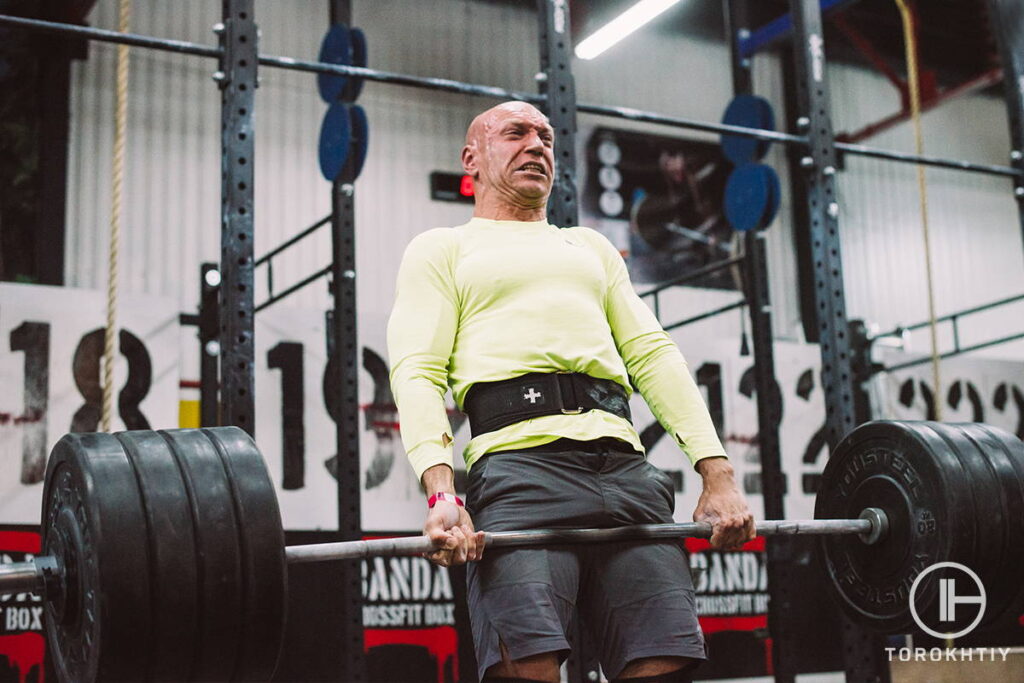
Rogue Ohio Power Bar Review
The Rogue Ohio Power Bar is a stiff barbell, and it is one of the latest I’ve had the privilege to try out. I have to say it’s a great choice for powerlifting. Now keep in mind that I’ve used dozens, if not hundreds different barbells over the many years. And This one definitely left a great impression. It stood out among the competitors.
The Rogue Ohio Power Bar has a 29 mm diameter steel shaft with a tensile strength of 205,000 PSI. This combo offers excellent rigidity and minimal flex. The bars snap-ring design and bronze bushings ensure smooth movements during heavier lifts.
I quickly came to appreciate the powerlifting marks and center knurl with a reliable grip that isn’t overly abrasive. I love aggressive knurling, but it can be extremely uncomfortable if it’s overdone. This one hit a nice and delicate balance, which not many barbells do.
It’s like most of the barbells are done in a factory, on a production line, with the same programmed measurements, while the Ohio barbell feels a bit like it is made by a craftsman, piece-by-piece. And with great focus given to each part of the barbell. It feels very personalized. Perhaps this one is subjective, but I do have a lot of colleagues that agree with this, so I guess there’s something to it.
So is this bar the perfect powerlifting barbell? No, it does come with one flaw that I’ve noticed – The zinc coating. While zinc provides corrosion resistance, which is important, it lacks the same level of grip as bare steel. So if you are not used to that, you might be negatively surprised.
Keep in mind, though, this is mostly a personal preference. But if you’re used to steel bars, it’s something worth noting.
All in all, though, the Rogue Ohio Power Bar – is an amazing choice for a powerlifting bar. If you do end up going for it, I know you’ll love it, and it has my full-on recommendation behind it. Until I discover a better one, this one will remain high on my top 1 list for powerlifting bars.
Positives:
Could be better:
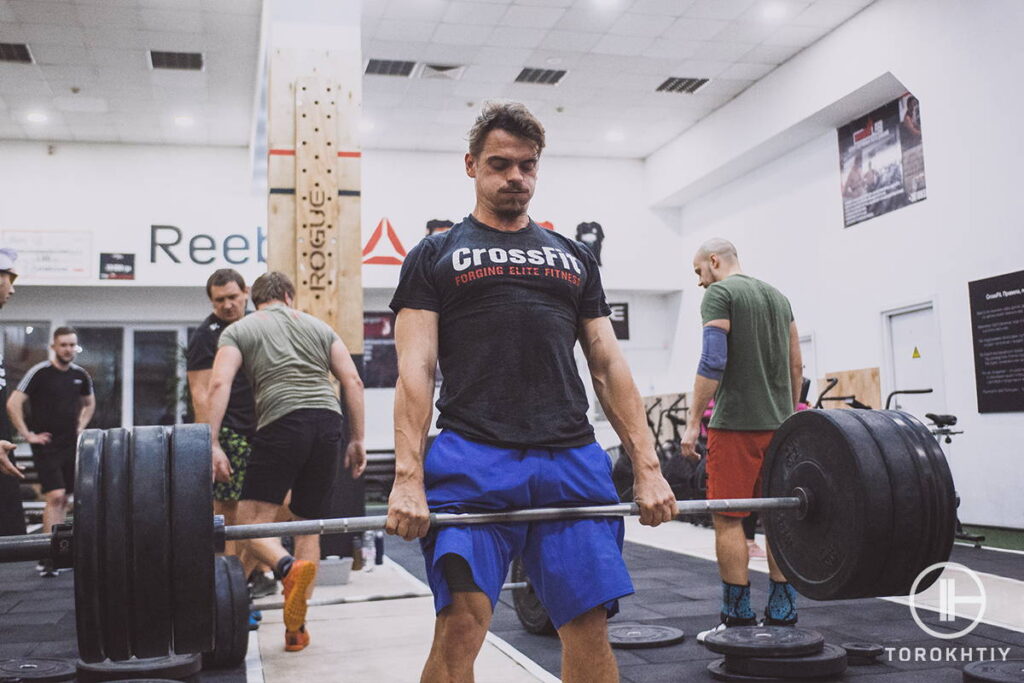
Can I Replace The Deadlift With A Stiff Bar?
Novice weight lifters might presume that either the deadlift or stiff bar achieves comparable results as both look similar and seem glorified lifting devices! But this is simply not true, as they each come equipped with unique benefits that set them apart from one another.
While both involve some level of muscle engagement across similar movement patterns, they are not interchangeable whatsoever.
A deadlift primarily targets various lower body muscles, such as hamstrings, glutes, and quads while simultaneously engaging other muscles throughout your back, core, and grip.
Using a specialized Deadlift Bar, usually featuring whip dynamics, allows for deep stretching development, effectively facilitating dynamic lifts through enhanced power production processes. This results in more robust and well-balanced strength and muscle growth, followed by improved functional movement capabilities over time.
Whereas compared to A stiff bar which lacks any flexibility or whip of any kind during lifting, allowing instead for greater control along key movement chains, using devices such as squats, bench presses, and overhead press falls within this category resulting in greater emphasis on consolidated weight distribution allowing higher levels focus placed on exercise form and technical precision.
Although stiff bars can be used for various deadlifting variations, however, they don’t deliver the same benefits as Deadlift Bars, especially in terms of the range of motion or potential energy transfer capabilities.
Yet still, with some subtle technique changes to promote stability over elasticity, it is possible to perform these Deadlift variations using stiff bars while achieving full benefits. Just bear in mind though, that training objectives, expectations, and circumstantial necessities will determine whether one bar replaces another.
FAQ
What Bar Is Best For Deadlifting?
When it comes to deadlifting the specialized deadlift bar reigns supreme. Thanks to its flexibility and whip, this type of bar enables a deeper stretch, greater power generation, and engagement of more muscles – all of which work together to boost your overall deadlift performance.
How Much Can You Deadlift With A Deadlift Bar Vs. A Stiff Bar?
If you use a deadlift bar you would be able to hoist heavier weights thanks to its high flexibility and whipping effect that contributes towards ramping up power output. Yet, selecting a rigid bar might offer improved steadiness but may limit your potential for lifting heavy weights as compared with a deadlift bar.
Can You Use A Deadlift Bar In Competition?
It definitely is! Powerlifting competitors often choose to employ these types of bars, specifically during the deadlifting segment. Their distinct characteristics offer possible advantages that can contribute to improved performances.
Conclusion
Hope you’ve enjoyed this article. I hope that it has answered the main questions, “What is a Deadlift Bar?”, and “What is a stiff bar?” and I hope that it left you more wiser than when you came here.
If the gym is part of your daily routine, and you like doing various barbell exercises then I don’t have to tell you that a huge deadlift bar vs squat bar debate exists among athletes. So you’ll often heal polarizing sides of the argument where they defend one and muck the other. Thankfully I’m neither. I use both in my lifting program, and it’s going to stay that way. This is why I think I was able to give you a concise and clear explanation for both barbell types, and also provide you with a real-world viewpoint on both. The good and the ugly. The pros and the cons.
So, have you previously experimented with both types of bars? Which side do you take in the ongoing deadlift bar vs squat bar debate? Do you have any inquiries about effectively integrating these specialty bars into your workout routine? Feel free to share your feedback or experiences in the comments section below.
Also read:
- How Many Calories Does Deadlift Burn
- How Often Should You Deadlift
- 500 LB Deadlift
- Weight of Deadlift Hex Bar
- Are Deadlifts Good for Abs
- Deadlift Everyday
- Deadlift Training
- Bumper Plates Buying Guide
References:
- An Examination of Muscle Activation and Power Characteristics // NCBI: https://pubmed.ncbi.nlm.nih.gov/26840440/
- Barbells: Withstanding the 1,000-lb Deadlift // UDEL: https://sites.udel.edu/coe-engex/2017/04/07/barbells-withstanding-the-1000-lb-deadlift/
- What Is Deadlifting Good For? // MedicineNet: https://www.medicinenet.com/what_is_deadlifting_good_for/article.htm
- Tensile strength // Britannica: https://www.britannica.com/science/tensile-strength
- Effect of a Hexagonal Barbell on the Mechanical Demand of Deadlift Performance // MDPI: https://www.mdpi.com/2075-4663/5/4/82
- A systematic review on the muscular activation on the lower limbs with five different variations of the deadlift exercise // RUA: https://rua.ua.es/dspace/bitstream/10045/110830/1/JHSE_2020_15_Proc4_27.pdf
- The Effects of Barbell Placement on Kinematics and Muscle Activation Around the Sticking Region in Squats // Frontiersin: https://www.frontiersin.org/articles/10.3389/fspor.2020.604177/full
- Sumo deadlift // BodyBuilding: https://www.bodybuilding.com/exercises/sumo-deadlift
- Deadlift vs. Romanian Deadlift: Benefits of Each and How to Do // HealthLine: https://www.healthline.com/health/romanian-deadlift-vs-deadlift
- Exploring the Deadlift // Journals: https://journals.lww.com/nsca-scj/Fulltext/2010/04000/Exploring_the_Deadlift.4.aspx
Why Trust Us?
With over 20 years in Olympic weightlifting, strength training, nutrition coaching, and general fitness our team does its best to provide the audience with ultimate support and meet the needs and requirements of advanced athletes and professional lifters, as well as people who strive to open new opportunities and develop their physical capabilities with us.
By trusting the recommendations of our certified experts in coaching, nutrition, and sports training programming, as well as scientific consultants, and physiotherapists, we provide you with thorough, well-considered, and scientifically proven content. All the information given in the articles concerning workout programming, separate exercises, and athletic performance, in general, is based on verified data.
The product testing process is described in more detail here.
Author: Sergii Putsov
Head of Sport Science, PhD
Best Results: Snatch – 165 kg,
C&J – 200 kg
Sergii Putsov, Ph.D., is a former professional weightlifter and National team member, achieving multiple medals in the 94 kg weight category at national competitions. With a Master’s degree in “Olympic & Professional Sport Training” and a Sport Science Ph.D. from the International Olympic Academy, Greece, Sergii now leads as the Head of Sport Science. He specializes in designing training programs, writing insightful blog articles, providing live commentary at international weightlifting events, and conducting educational seminars worldwide alongside Olympic weightlifting expert Oleksiy Torokhtiy.
Reviewed by: Oleksiy Torokhtiy
Olympic Weightlifting Champion, PhD in Sport Science
Best Results: Snatch – 200 kg,
C&J – 240 kg
Oleksiy Torokhtiy is a professional athlete boasting 20 years of experience in Olympic weightlifting. With multiple European and World titles under his belt, he has showcased his prowess in two Olympic Games (Beijing 2008 and London 2012). Upon concluding his illustrious career, Oleksiy dedicated himself to coaching. By 2022, he had conducted over 200 weightlifting seminars worldwide. He is the visionary behind an international sportswear and accessories brand known for its motto, “Warm Body Cold Mind.” Additionally, he is an esteemed author and the creator of a series of training programs and eBooks.




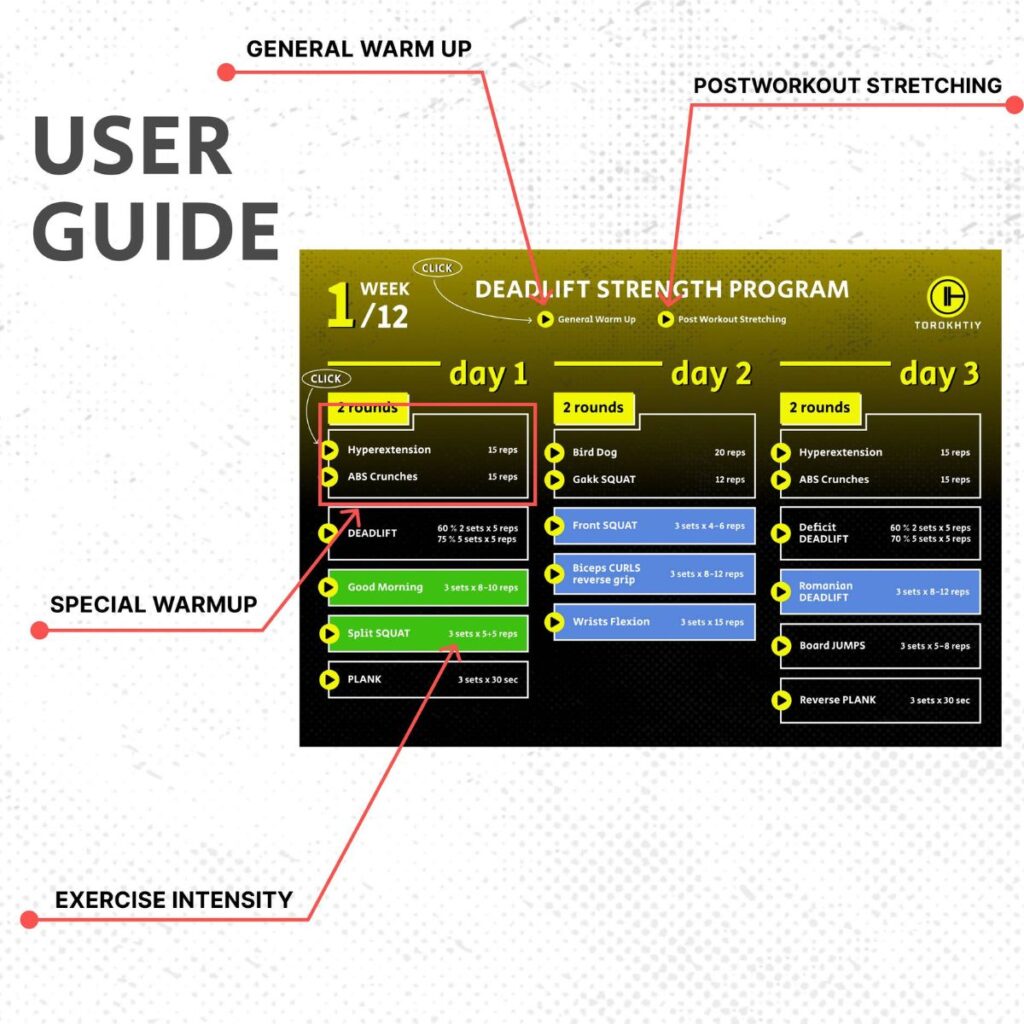
Still have questions after reading our article? Unlock your full potential by engaging with our experts and community! Don’t hesitate — leave a comment below and Sergii Putsov will provide a personalized answer and insights to help you reach your goals.